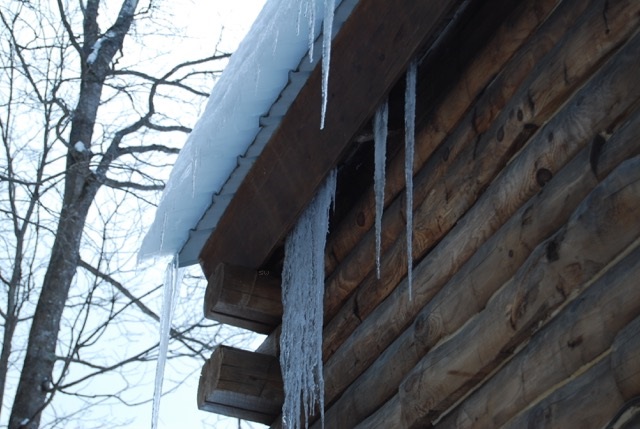How to Deal With the Snow on Your Roof like a Pro

Learn the ways you can take precautions against the hazards of snow and live through every snowstorm safely.
As most of us know, it snows regularly in temperate regions away from the equator. Snow can be fun and all, but it can also be a headache. A lot of snow piling up on your roof is definitely not good. Fortunately, there are ways you can take precautions against the hazards of snow and live through every snowstorm safely. This article is a guide to how you can take care of your roof, use energy more efficiently, and how that snow on your roof can actually work to your advantage.
Did You Know Snow on Your Roof could be a Good Thing?
Snow on your roof is not necessarily a bad thing. Here are some reasons why:
- When it snows, it becomes noticeably quiet. This is because when snowflakes fall on each other, air pockets are created which muffles the sound.
- A layer of snow on your roof acts as a form of insulation. It’s like an actual extra insulation layer in the attic. This layer which is full of air pockets protects your house from losing heat and hence keeps it warm.
- Snow can be an indicator of whether you are losing heat from your house. When warm air rises up, it escapes through the roof if you have leaks, and it will melt down the snow. Also where insulation batts have shifted in the attic over time, there will be heat escaping through the roof. Heat can also escape through
Easy Fixes After a Light Snowstorm
After a light snowstorm that was not accompanied by wind, just go take a good look at your roof. If your attic is well insulated and the outside weather is cold, the snow is likely to stay on for a few days. If you notice the snow melting in spots, it is probably because you have air leaks that will require fixing.
One easy fix would be laying out batts perpendicular to rafters so as to wrap up any gaps. Alternatively, you can blow the batts in several inches deep. Always consult a professional to guide you regarding the coverage and R-value of the insulation you’ll need to use.
Something else that you can do is waterproof the plumbing vents and the areas around the light fixtures. Since it is not possible to completely insulate around woodstoves or chimneys, there will be a bit of heat lost here.
Maintaining Your Roof after Excessive Snowfall
Heavy and wet snow on your roof can be a hazard and needs to be removed as soon as possible. There are building codes that stipulate how much weight of snow a particular type of roof can withstand. Older homes are at a higher risk since they can easily cave in from excessive snow.
So, if you see any of the signs below, arrange for immediate evacuation and call 911 or the fire department because your roof could cave in on you without further warning:
- Sagged ceiling joists
- Major water leaks
- Cracked walls
- Stuck doors or doors having to pop to open
- Loud cracking or creaking noises
How to Avoid Disaster by Removing the Snow
As a rule of thumb, it’s a good idea to remove snow on your roof if it has accumulated to more than six inches. If your house is single-storeyed, use a snow rake to remove all the excess snow. These rakes have stiff rubber blades and are fitted with telescopic handles that will allow you to reach the furthest area possible. Avoid using a ladder to reach the snow since it is very easy to slip off and seriously injure yourself.
Remove only the excess snow and leave an inch or two of it on the roof for that added insulation. This will also help protect your roof from damage that can be caused by scraping it with your rake. If the house is two-storeyed, do not remove the snow by yourself and instead call snow removal experts to do it. They can handle the job better since they have the expertise, right tools and are insured should an accident happen.
Professional snow removers know how to cut through the snow to make a path where they will place a ladder. From there, they then create room below where all the falling snow will pile up without causing any obstruction or damage to property.
Practice safety first
Snow and ice can cause many problems. If you run into issues with snow on your roof and are unsure of how to resolve, make sure to contact someone you can trust and be wary of scams. It’s quite common for people without proper tools, experience or insurance to offer cheap estimates on quality roof repairs. Make sure to take the proper steps when hiring a roofer and report any fraudulent activities to your local authorities.
It is best that you work with a roofer you trust to ensure quality craftsmanship and results. Alternatively, if you don’t have one, look for a referral from someone who has actually dealt with one. Just be sure that the contractor you hire is licensed and honest.
With a qualified, licensed, bonded and insured contractor, you can rest assured that your roof and insulation will be properly taken care of. After the repairs, the efficiency of your home will be at its best and you can relax and enjoy the good side of winter.
Have a question? AskARoofer.
Find your local roofing contractor in the RoofersCoffeeShop® Contractor Directory.










Comments
Leave a Reply
Have an account? Login to leave a comment!
Sign In